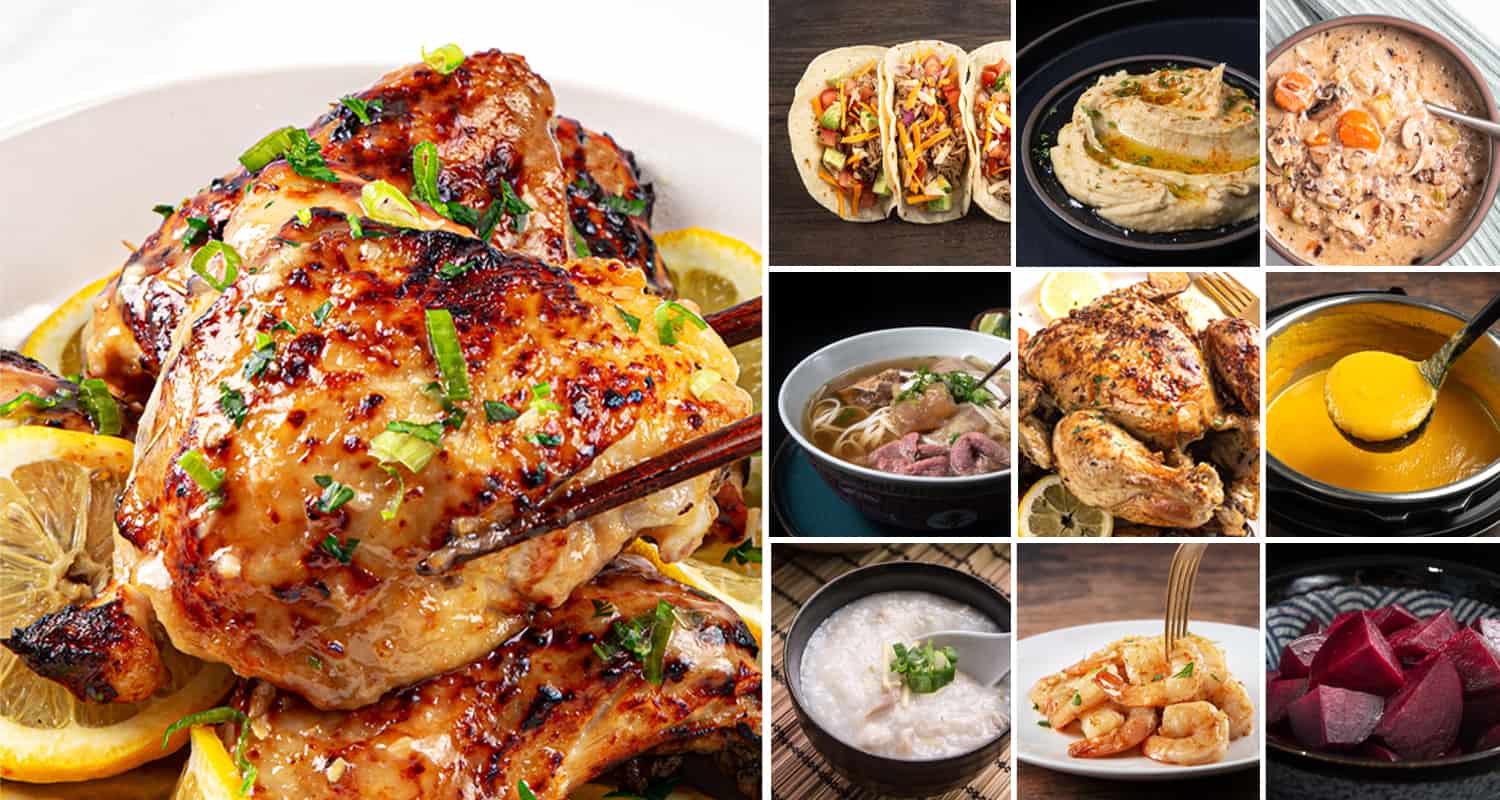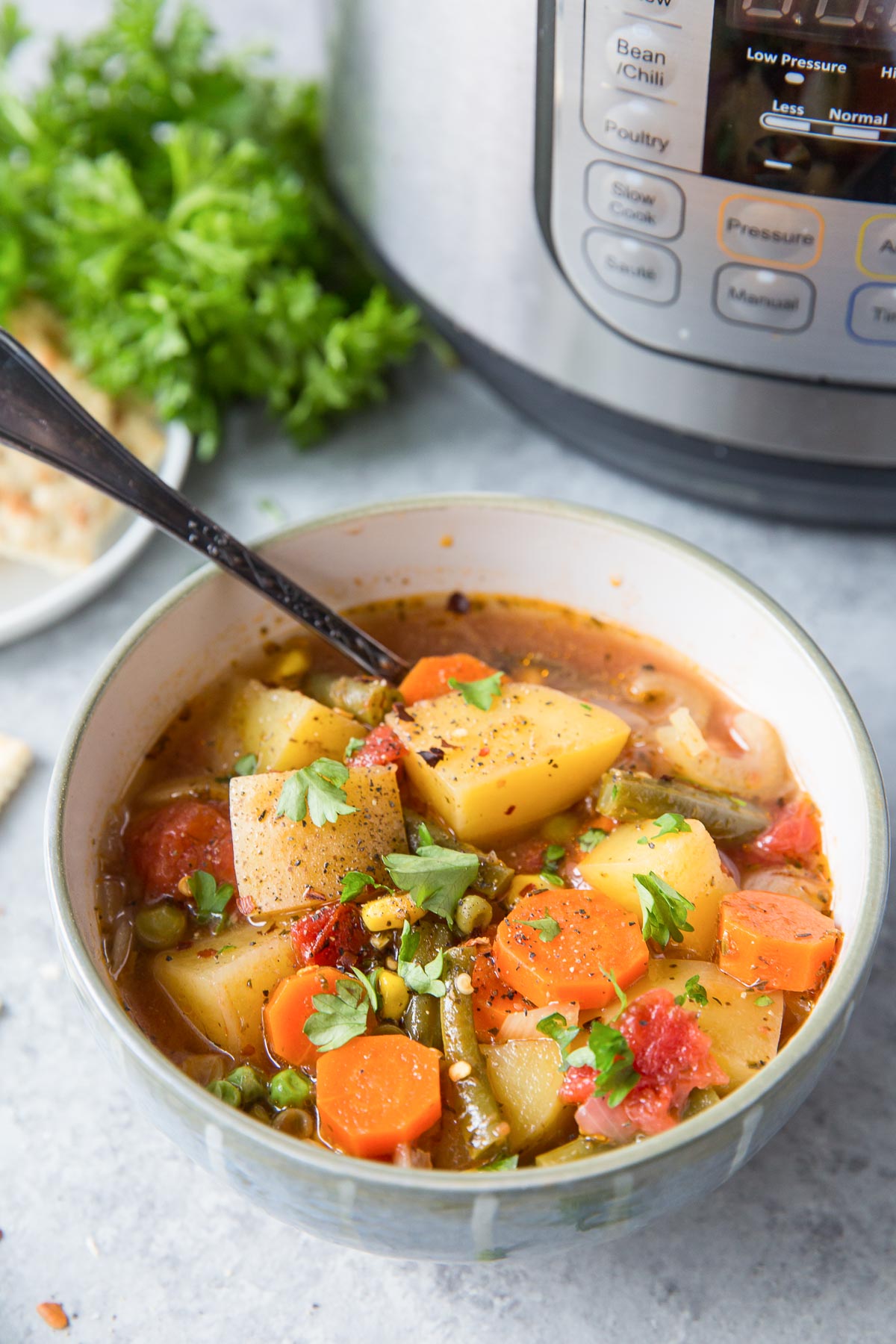A pressure cooker is a perfect tool for preparing quick and healthy meals. With its ability to cook food faster and retain more nutrients, a pressure cooker is a must-have in any kitchen.
Pressure cookers have been around for centuries, but they have recently gained popularity due to their ability to save time and cook healthy meals. With a pressure cooker, you can cook a wide range of dishes in a fraction of the time it would take using other cooking methods.
This is because the pressure cooker uses high pressure to cook food quickly, which helps to retain more nutrients and natural flavors. Additionally, pressure cookers are versatile and can be used to prepare a range of dishes, including soups, stews, rice, and even desserts. In this blog, we will explore the benefits of using a pressure cooker for quick and healthy meals and provide some delicious recipes to try at home.
:strip_icc()/RU315701-0db9a91da36c4685bad7b52c015091c8.jpg)
The Evolution Of Pressure Cooking
Pressure cooking has evolved significantly from its early inventions to modern innovations. The earliest pressure cooker was invented by Denis Papin in 1679, and it has since transformed into a sophisticated kitchen appliance. One of the key benefits of pressure cooking is its ability to retain nutrients in food. The high pressure and temperature inside the cooker help to cook food quickly while preserving essential vitamins and minerals. This makes pressure cookers an ideal choice for preparing quick, healthy meals without compromising on nutritional value.
Demystifying Pressure Cookers
Pressure cookers are a fast and efficient way to cook healthy meals. They work by creating steam under pressure, which allows food to cook quickly. Modern pressure cookers come with various safety features to prevent accidents, such as locking lids and pressure release valves. The high pressure and heat inside the cooker help to tenderize tough meats and retain nutrients in vegetables. With a pressure cooker, you can cook nutritious meals in a fraction of the time it takes with traditional cooking methods.
Choosing The Right Pressure Cooker
When it comes to selecting a pressure cooker, it is important to consider the different types available and the key features they offer. There are two main types of pressure cookers: stovetop and electric. Stovetop pressure cookers are traditional and require manual monitoring of heat and pressure. Electric pressure cookers, on the other hand, are more convenient and come with preset cooking programs.
When looking for a pressure cooker, there are a few key features to look for. Firstly, consider the size and capacity that suits your cooking needs. The material of the pressure cooker is also important, with stainless steel being a popular choice due to its durability and easy maintenance.
Other features to consider include the pressure settings, safety mechanisms, and additional functions such as sautéing or slow cooking. It is also worth reading reviews and comparing prices to ensure you make an informed decision.
Benefits Of Pressure Cooking
Pressure cooking offers a multitude of benefits that make it an excellent choice for quick and healthy meals.
Time Efficiency in Meal Prep: Pressure cookers significantly reduce cooking time, allowing you to prepare meals in a fraction of the time compared to traditional cooking methods. The high pressure and steam inside the cooker cook food faster, making it ideal for busy individuals or families.
Energy Conservation and Sustainability: Pressure cookers use less energy compared to other cooking appliances. The sealed environment traps heat and steam, requiring less energy to reach and maintain the desired cooking temperature. This not only saves time but also reduces energy consumption, making it an eco-friendly choice for sustainable cooking.
By opting for pressure cooking, you can enjoy the convenience of quick meal preparation without compromising on nutrition or sustainability.
Nutrition Under Pressure
Pressure cookers are an efficient and healthy way to cook meals quickly. However, it is essential to maintain the vitamin and mineral integrity of the food while cooking under pressure. The high temperature and pressure can cause loss of nutrients, especially vitamin C and B vitamins. To minimize this, it is recommended to cook vegetables for a shorter period and to add them to the pressure cooker later in the cooking process.
Another factor to consider is the impact on food flavor and texture. The high pressure can cause food to become overcooked and mushy. It is important to follow the recommended cooking times and to release the pressure quickly to avoid overcooking. Additionally, using a natural pressure release method can help to retain the texture and flavor of the food.
| Tip | Description |
|---|---|
| Use a timer | Set a timer to avoid overcooking the food and to release the pressure quickly. |
| Don’t overfill | Don’t fill the pressure cooker more than two-thirds full to avoid clogging the vent pipe. |
| Add liquid | Always add enough liquid to the pressure cooker to create steam and to prevent burning. |

Mastering Pressure Cooker Recipes
Pressure cookers are a great tool for preparing quick, healthy meals. If you’re new to using a pressure cooker, there are a few essential tips to keep in mind. First, make sure to always follow the manufacturer’s instructions and safety guidelines. Second, use the appropriate amount of liquid and don’t overfill the cooker. Third, release the pressure according to the recipe’s instructions to avoid overcooking.
To expand your culinary horizons with a pressure cooker, try experimenting with different types of cuisine and ingredients. You can make everything from soups and stews to risottos and even desserts. With the ability to cook meals in a fraction of the time it would take using traditional methods, a pressure cooker is a valuable addition to any kitchen.
| Benefits of Using a Pressure Cooker: |
|---|
| 1. Retains more nutrients in the food |
| 2. Saves time and energy |
| 3. Reduces cooking odors and heat in the kitchen |
| 4. Tenderizes tough cuts of meat |
Meal Prepping With A Pressure Cooker
Using a pressure cooker for meal prepping can help you create quick and healthy meals with ease. Planning your weekly menus becomes simpler as you can cook a variety of dishes in a short amount of time. The pressure cooker’s ability to cook food faster than traditional methods saves you precious time in the kitchen.
Storing and reheating meals is also convenient when using a pressure cooker. You can easily portion out your meals and store them in airtight containers in the refrigerator or freezer. When you’re ready to enjoy your prepped meals, simply reheat them in the pressure cooker for a quick and delicious meal.

Common Myths And Misconceptions
Pressure cookers have long been a popular kitchen appliance for their ability to quickly cook healthy meals. However, there are several common myths and misconceptions surrounding pressure cooking that need to be addressed. Let’s bust some of these myths:
| Myth | Reality |
| Pressure cookers are dangerous. | Modern pressure cookers come with built-in safety features that prevent accidents. |
| Pressure cooking destroys nutrients. | Studies have shown that pressure cooking retains more nutrients compared to other cooking methods. |
| Pressure cookers are difficult to use. | With user-friendly designs and clear instructions, pressure cookers are easy to operate. |
| Pressure cookers explode. | When used correctly and maintained properly, the chances of a pressure cooker exploding are extremely low. |
It’s important to separate fact from fiction when it comes to pressure cooking. The reality is that pressure cookers are safe, efficient, and a great tool for preparing quick and healthy meals. Don’t let these misconceptions deter you from enjoying the benefits of pressure cooking in your kitchen!
The Future Of Pressure Cooking
Pressure cookers have come a long way in revolutionizing the way we cook. Innovations such as electric pressure cookers and multi-functional models have made pressure cooking more convenient and versatile. Different cultures have embraced pressure cooking, incorporating their culinary traditions into pressure cooker recipes. From Indian curries to Brazilian feijoada, the global influence on pressure cooking is undeniable. The future of pressure cooking looks promising, with advancements in technology and design making it easier than ever to prepare quick, healthy meals. As we look ahead, it’s clear that pressure cookers will continue to play a pivotal role in modern kitchens, catering to the needs of busy individuals and families alike.
Frequently Asked Questions
Is Food Cooked In A Pressure Cooker Healthy?
Yes, food cooked in a pressure cooker is healthy as it retains more nutrients due to shorter cooking time.
What Is Best Cooked In A Pressure Cooker?
Pressure cookers are versatile and can cook a variety of dishes. They excel at cooking tough cuts of meat, beans, grains, and stews. They also cook rice, soups, and even desserts quickly and efficiently. With a pressure cooker, you can prepare delicious meals in no time.
What Foods Should Not Be Cooked In A Pressure Cooker?
Avoid cooking foods with high starch content like pasta, oatmeal, and cereals in a pressure cooker. Delicate ingredients like dairy products, thickening agents, and fruits are also not suitable for pressure cooking.
Which Is Healthier, A Slow Cooker Or A Pressure Cooker?
Both slow cookers and pressure cookers can be healthy cooking options. Slow cookers are great for cooking stews, soups, and roasts, allowing the flavors to meld together over a long period of time. Pressure cookers, on the other hand, cook food quickly and retain more nutrients.
Ultimately, the healthiness of the food cooked in either appliance depends on the ingredients used and the cooking method.
Conclusion
Incorporating a pressure cooker into your kitchen can revolutionize the way you prepare meals. With its ability to quickly cook healthy and delicious dishes, it’s a versatile tool for any home cook. By streamlining the cooking process, a pressure cooker can help you save time and create nutritious meals effortlessly.

